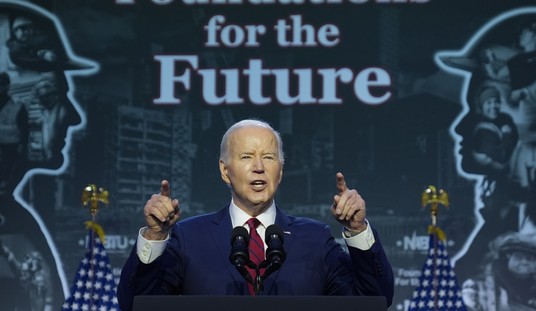IBM once built the world’s best portable keyboard. Its official name was “TrackWrite,” but everybody called it “the butterfly” because of the way it spread its wings when you opened the computer. John Karidis designed it for the ThinkPad 701 back in 1995, and watch this baby in action.
It’s so well engineered, that there are still butterflies in perfect working condition, even though the last one was produced in 1996. That’s right: although the 701 was IBM’s best-selling laptop, the butterfly keyboard was abandoned after only one year. TrackWrite was a wonderful indulgence for a laptop with a 10-inch screen, but the very next year after it was introduced, 12-inch screens became the new norm — and bigger screens allowed for a full-sized keyboard without any fancy engineering.
Just like a real butterfly, the TrackWrite was beautiful but short-lived.
That’s the first thing I thought of when I watched Microsoft introduce its new Surface tablet computers last night: A gorgeous keyboard without a market. Microsoft has designed what is undoubtedly the best portable keyboard ever… for a touch tablet. In fact, if you go to Microsoft’s promo page, this is the very first image you’re presented with.

That’s how MS wants to introduce you to their new tablet — a tiny little screen with a great big keyboard. Scroll down the page a bit, and Microsoft reminds you that “some activities call for a keyboard.” The description continues:
Surface comes with an integrated Kickstand and a revolutionary, 3mm thin, pressure sensitive cover that doubles as a fully functioning keyboard and trackpad. Your Touch Cover connects to your Surface with a single magnetic click. Now you can chat with friends and respond to emails comfortably.
It’s really a very nifty piece of kit, and it’s included for free. Apple charges you a less-than-nifty $69 for their wireless keyboard, and it doesn’t attach to anything at all, not even with magnets. But you have to wonder if Apple doesn’t still have the right approach.
Microsoft absolutely had to jump into the tablet space, but Steve Ballmer & Co. don’t seem to understand what that space is. Before I explain, you should know that the Surface is a beautifully-engineered and manufactured gadget. While I haven’t had a hands-on with it yet, I know good engineering when I see it, and reports from the event last night were almost universal in their praise for the construction quality. But that aside, the Surface is one odd duck.
Scroll back up and look at how Microsoft has introduced its tablet: With a keyboard. They aren’t saying, “We’ve built a great tablet,” they’re saying, “We’ve built a tablet with a great keyboard.” It’s tablet that’s trying really hard to be a laptop when it grows up.
Let’s look at the very next feature Microsoft wants to make you aware of.

 Look! It’s a tablet with a keyboard and a kickstand, so you can use it just like a laptop! The next shot down (at right) shows the kickstand in action yet again. Alongside, the caption reads “Hands off entertainment.” Despite the lack of a hyphen, I’m sure Microsoft doesn’t mean the kickstand will cut off your hands, entertainingly. What they’re saying is: This is the tablet you don’t touch. That’s no exaggeration, either. The marketing says: It comes with a cover, that cover is a keyboard, and the kickstand keeps it out of your hands.
Look! It’s a tablet with a keyboard and a kickstand, so you can use it just like a laptop! The next shot down (at right) shows the kickstand in action yet again. Alongside, the caption reads “Hands off entertainment.” Despite the lack of a hyphen, I’m sure Microsoft doesn’t mean the kickstand will cut off your hands, entertainingly. What they’re saying is: This is the tablet you don’t touch. That’s no exaggeration, either. The marketing says: It comes with a cover, that cover is a keyboard, and the kickstand keeps it out of your hands.
 And they mean it. The case of the Surface is made of a “a precision crafted VaporMg,” which is a lovely bit of precision-milled magnesium. But the edges are at odd angles, in perfect contrast to the iPad’s seamless curves. Those angles say “corners,” and corners do not say “touch me.” There are even screws visible on the back. No consumer is ever going to open this up to make repairs or install upgrades — because they can’t. And yet, there they are: Screws. Those aren’t just any screws, either. You’re looking at those weird, star-shaped screws that civilians like you and me can’t undo. Unscrewable screws are yet another way of signaling: Don’t touch.
And they mean it. The case of the Surface is made of a “a precision crafted VaporMg,” which is a lovely bit of precision-milled magnesium. But the edges are at odd angles, in perfect contrast to the iPad’s seamless curves. Those angles say “corners,” and corners do not say “touch me.” There are even screws visible on the back. No consumer is ever going to open this up to make repairs or install upgrades — because they can’t. And yet, there they are: Screws. Those aren’t just any screws, either. You’re looking at those weird, star-shaped screws that civilians like you and me can’t undo. Unscrewable screws are yet another way of signaling: Don’t touch.
But a tablet is all about touch.
You hold a tablet in your hands, you work your fingers across the screen. Everything about a tablet should invite you to touch it, because that’s how you operate it. Making and marketing a tablet in ways that say “Hands off!” is like trying to sell steak by showing how it can be used to treat black eyes. Sure, that’s useful on rare occasion, but it’s not why people drool at the marbled ribeyes in the cooler at Whole Foods.
Dig beneath the surface, and things get weirder still. The no-touch tablet even comes in two form factors, for two different markets. There’s the little one, about the same thickness as an iPad, with a low-power ARM processor inside. Then there’s a significantly thicker version, with a full-fledged (and power-hungry and hot) Intel i5 CPU. So you have one model designed for people who want a tablet that thinks it’s a laptop, and another model for people who want a tablet that might as well be a laptop.
Then there are the things missing from Microsoft’s sales pitch. I’ll list them:
When you can buy one.
How much it will cost.
How long the battery will last.
The screen resolution.
Those are some pretty big holes, so let’s try to fill them.
 The absence of an availability date, I suppose, is to give IT managers pause before buying any iPads for their companies. “But there’s a Microsoft tablet just around the corner, and nobody ever got fired for buying Microsoft!”
The absence of an availability date, I suppose, is to give IT managers pause before buying any iPads for their companies. “But there’s a Microsoft tablet just around the corner, and nobody ever got fired for buying Microsoft!”
Microsoft claims the prices will be “in line” with ARM-based tablets for the junior version and with Ultrabook (MacBook Air clones running Windows) prices for the daddy size. But they won’t say exactly how much.
The battery life should really concern potential buyers. Apple compromised and made the new iPad slightly thicker than the old model, to preserve the advertised — and delivered — ten-hour battery life. If MS had matched that, you can bet they’d be crowing about it. And that monster version, with the Intel CPU? It likely has twice the battery, and less than half the battery life.
As for the screen, all Microsoft will say is that it “has a 10.6″, 16:9 widescreen HD Display.” The little one is less HD, the bigger one is more HD. They probably mean 720p and 1080p, respectively. What that means is, the Surface that’s priced to compete with the new iPad, has a worse display than the old iPad. If you’re willing to pony up Ultrabook prices, you’ll get a screen that’s slightly less worse than the old iPad.
Before we finish, even the name is questionable. What’s the plural? Surfaces? Surfi? MS already makes those massive Surface coffee-table computers nobody buys — and that’s the branding they want to share with their new tablet?
Going further, “surface” is synonymous with “superficial” and “cosmetic” and “skin deep.” I’m the first to admit, people make plenty of fun with “iPad.” “Is it a feminine hygiene product?” But at least Apple didn’t tell you “keep your hands to yourself,” like the high school cheerleading captain used to do. And the name might even remind you of all the depth of the high school cheerleading captain.
The Surface is a confusing product from a company which seems confused by what a tablet is supposed to do, and why people want them. The very last image MS leaves you with is a sales pitch for all the pretty colors the keyboard comes in. We’ve been scrolling for hours, and they’re still talking keyboards.
Assuming it doesn’t turn out to be vaporware, you’ll see bargain bins full of unsold Surface tablets before Christmas is over.









Join the conversation as a VIP Member